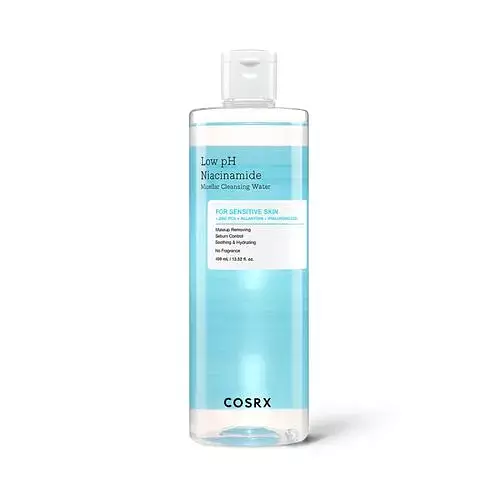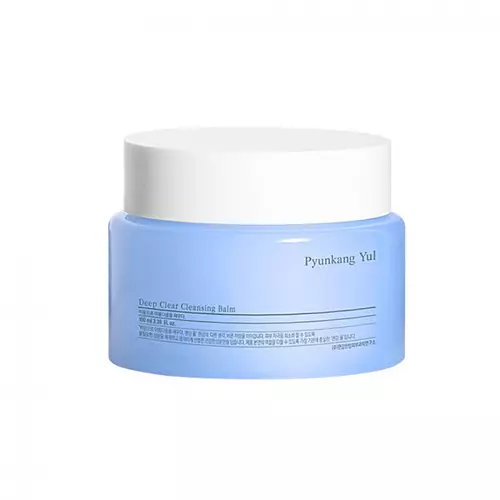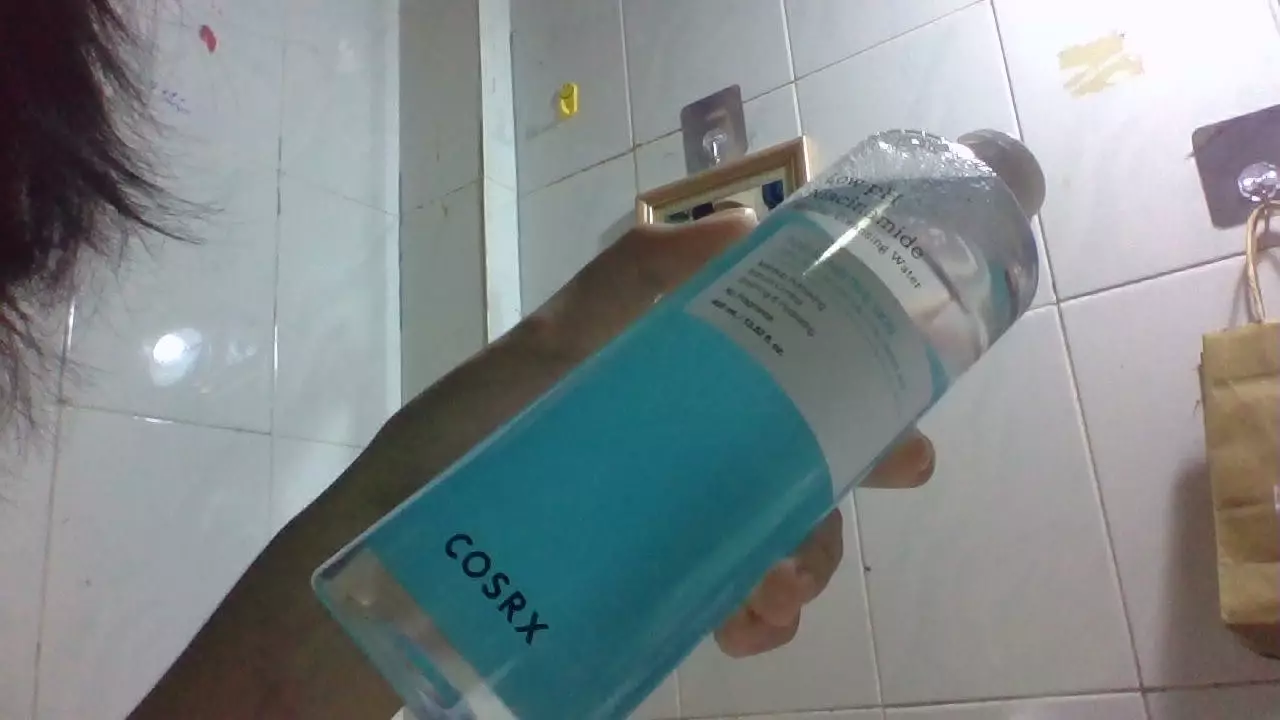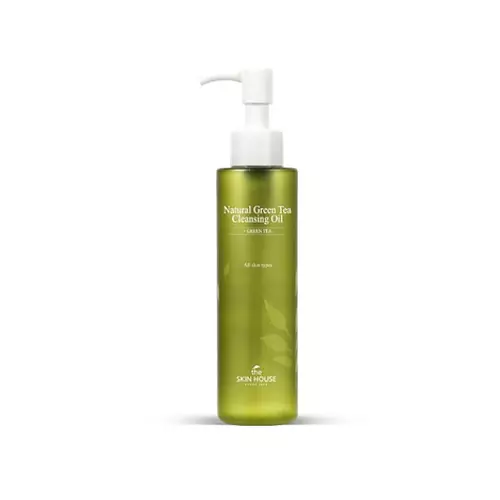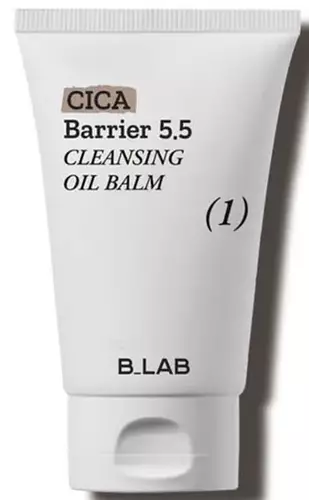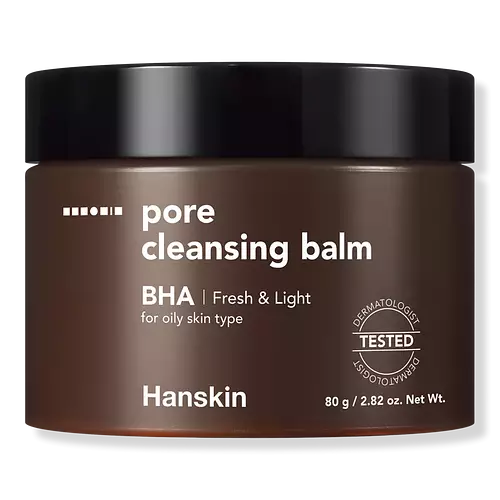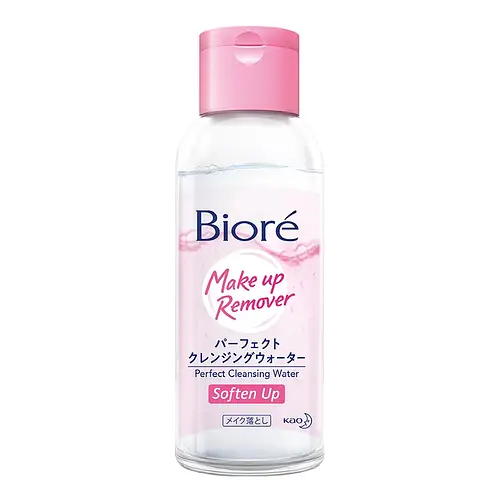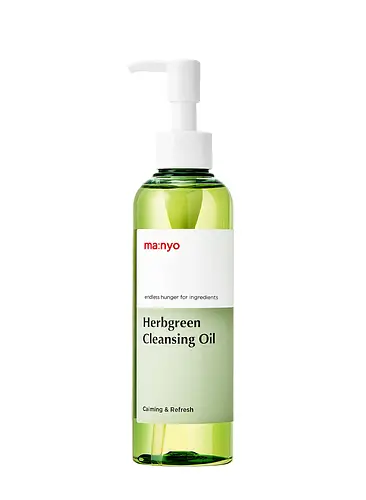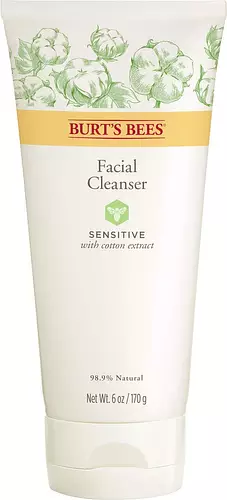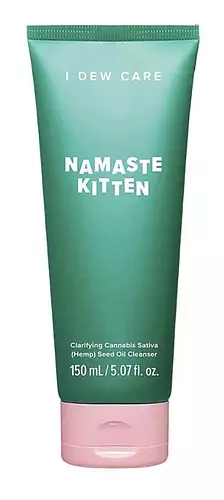COSRX Low pH Niacinamide Micellar Cleansing Water Versus Pyunkang Yul Deep Clear Cleansing Balm
Updated on June 19, 2024
Overview
What they are
These products are both cruelty-free and reef safe . They have a total of 5 ingredients in common
Cool Features
They both contain hyaluronic acid
Suited For
They're both likely to be good for brightening skin, sensitive skin, oily skin, scar healing and dark spots
Free From
They both do not contain any harsh alcohols, common allergens, parabens, silicones or sulfates
We independently verify ingredients, and our claims are backed by peer-reviewed research. Spot a product that needs an update? Let us know.
Ingredient Info
COSRX Low pH Niacinamide Micellar Cleansing Water 16 ingredients
Pyunkang Yul Deep Clear Cleansing Balm 36 ingredients
At a glance
Click on any of the items below to learn more
COSRX Low pH Niacinamide Micellar Cleansing Water 16 ingredients
Pyunkang Yul Deep Clear Cleansing Balm 36 ingredients
Notable Ingredients
This product contains 1 ingredient that may have this attribute:
This product contains 1 ingredient that may have this attribute:
Benefits
This product contains 1 ingredient that may have this attribute:
This product contains 2 ingredients that may have this attribute:
This product contains 3 ingredients that may have this attribute:
This product contains 1 ingredient that may have this attribute:
This product contains 1 ingredient that may have this attribute:
This product contains 2 ingredients that may have this attribute:
This product contains 1 ingredient that may have this attribute:
Notable Ingredients
This product contains 1 ingredient that may have this attribute:
This product contains 1 ingredient that may have this attribute:
This product contains 5 ingredients that may have this attribute:
Benefits
This product contains 3 ingredients that may have this attribute:
This product contains 1 ingredient that may have this attribute:
This product contains 3 ingredients that may have this attribute:
This product contains 3 ingredients that may have this attribute:
This product contains 1 ingredient that may have this attribute:
This product contains 2 ingredients that may have this attribute:
This product contains 1 ingredient that may have this attribute:
This product contains 1 ingredient that may have this attribute:
This product contains 2 ingredients that may have this attribute:
Concerns
This product contains 1 ingredient that may have this attribute:
This product contains 1 ingredient that may have this attribute:
This product contains 1 ingredient that may have this attribute:
This product contains 1 ingredient that may have this attribute:
This product contains 1 ingredient that may have this attribute:
Ingredients Side-by-side
Ingredients Explained
These ingredients are found in both products.
Ingredients higher up in an ingredient list are typically present in a larger amount.
Water. It's the most common cosmetic ingredient of all. You'll usually see it at the top of ingredient lists, meaning that it makes up the largest part of the product.
So why is it so popular? Water most often acts as a solvent - this means that it helps dissolve other ingredients into the formulation.
You'll also recognize water as that liquid we all need to stay alive. If you see this, drink a glass of water. Stay hydrated!
Learn more about WaterDipropylene Glycol is a synthetically created stabilizer and solvent. It is a part of the glycol class in the alcohol family.
Dipropylene Glycol helps dissolve and evenly distribute ingredients. It also helps decrease viscosity and thin out texture.
As a masking agent, Dipropylene Glycol can be used to cover the smell of other ingredients. However, it does not have a scent.
Studies show Dipropylene Glycol is considered safe to use in skincare.
Learn more about Dipropylene GlycolPanthenol is a common ingredient that helps hydrate and soothe the skin. It can be found naturally in our skin and hair.
This ingredient is also referred to as pro-vitamin B5 or dexpanthenol in dermatology.
Panthenol is famous due to its ability to go deeper into the skin's layers. Using this ingredient has numerous pros (and no cons):
Like hyaluronic acid, panthenol is a humectant. Humectants are able to bind and hold large amounts of water to keep skin hydrated.
Once oxidized, panthenol converts to pantothenic acid. Panthothenic acid is found in all living cells.
Learn more about PanthenolSodium Hyaluronate is hyaluronic acid's salt form. It is commonly derived from the sodium salt of hyaluronic acid.
Like hyaluronic acid, it is great at holding water and acts as a humectant. This makes it a great skin hydrating ingredient.
Sodium Hyaluronate is naturally occurring in our bodies and is mostly found in eye fluid and joints.
These are some other common types of Hyaluronic Acid:
Learn more about Sodium Hyaluronate1,2-Hexanediol is a multi-tasker ingredient. It acts as a preservative to increase shelf-life and can aid other preservatives in preventing microbe growth. 1,2-Hexanediol also helps the skin retain moisture as a humectant.
In products that are water-based, this ingredient can help stabilize perfumes and fragrances. It can also help make the texture of products softer and more smooth.
Ingredient Ratings
Here's what our community thinks of the ingredients in these products.
When to use
COSRX Low pH Niacinamide Micellar Cleansing Water 16 ingredients
Pyunkang Yul Deep Clear Cleansing Balm 36 ingredients


Reviews
Here's what our community thinks
COSRX Low pH Niacinamide Micellar Cleansing Water 16 ingredients
Clover
My favorite way to cleanse in the morning!
I have dry but acne prone skin, so I really wanted to find a way to cleanse my skin in the morning...
My favorite way to cleanse in the morning!
I have dry but acne prone skin, so I really wanted to find a way to cleanse my skin in the morning without also stripping my skin of every ounce of moisture it has. I’ve been testing micellar waters for awhile now, but so far this one by COSRX is my favorite! It feels a little more hydrating than some of the others I’ve tried (Bioderma and Garnier), and I like that it contains panthenol, niacinamide, zinc PCA, and madecassoside to help with my inflammatory acne. COSRX states there is no need to rinse off this micellar water which is super convenient for me, as I keep most of my skincare on my vanity and not in my bathroom. In the morning I like to pore this onto a cotton pad before swiping this across my face to remove any excess oil or product (from my previous nights routine) before following up with a hypochlorous acid spray to kill bacteria. This way of morning cleansing has been working very well for me, and I recommend giving it a try if you also find that using a water based cleanser twice a day is too drying for your skin. However, if you’re skin is super sensitive I still think I would recommend the Bioderma Sensibio Micellar Water over this one simply because I believe it to be the best option for sensitive skin. But for those without sensitive skin this micellar water from COSRX is amazing! I highly recommend giving it a try.
